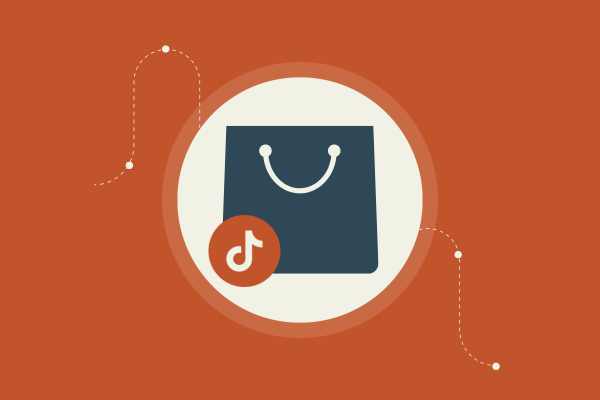How to Calculate Operating Leverage for Your eCommerce Store: Boost Profits Now
Operating leverage might sound like a fancy term, but it's really about how your costs change as your sales do. Understanding operating leverage means knowing how fixed and variable costs affect your profits. This can be a game changer for you. It shows you exactly how boosting sales can lead to bigger profits without adding a ton of extra costs.
You'll learn how to calculate operating leverage so you can see the impact on your bottom line. Knowing this can help you decide whether to spend more on marketing or tighten up operations. It's about making your business work smarter, not harder. This knowledge helps you anticipate and manage changes in your financial performance.
Imagine owning this insight and using it to outsmart your competition. You'll discover how to use operating leverage to scale your eCommerce business like never before. Stick around to dive deeper and see how eCommerce businesses can turn this info into a golden tool for success.
Key Takeaways
Calculate operating leverage to boost profitability.
Align sales strategies with cost structures for efficiency.
Leverage insights to enhance financial performance.
Understanding Operating Leverage
Operating leverage is key to knowing how changes in sales affect profits in your eCommerce store. It shows the power of your cost structure and how fixed costs impact your bottom line. Let's dive in.
What Is Operating Leverage?
Operating leverage is all about your cost structure. It measures how a change in sales can boost your operating income. When you have high operating leverage, your business has a larger proportion of fixed costs compared to variable costs. This can be a double-edged sword. When sales go up, profits can skyrocket.
Think of it like this: a small increase in sales can lead to a big jump in profits. Why? Because your fixed costs stay the same regardless of your sales volume. This concept is crucial for eCommerce businesses where fixed investments like website maintenance or storage costs can remain steady, allowing more of each sale to convert directly into profit. Learn more about operating leverage.
The Impact of Fixed Costs on Profitability
Fixed costs can either be your best friend or your worst enemy. Here’s why: they stay the same no matter how much you sell. Even when your sales dip, those costs stay rock solid. For instance, rent or fixed salaries don't change.
If you have a lot of fixed costs, you might see wild swings in profits. High fixed costs mean your business needs a certain level of sales just to break even. On the flip side, when sales rise, profits can rise faster than they would in a business with mostly variable costs. This can make your store powerful when sales soar but risky during downtime. Read about the influence of fixed costs.
Operating Leverage vs. Financial Leverage
Operating leverage and financial leverage both deal with risk, but they’re not the same thing. Operating leverage focuses on your cost structure. Financial leverage, on the other hand, looks at how you use debt. It’s about financing your business and how much debt vs. equity you use.
Financial leverage involves borrowing money to increase potential returns. If your business does well, debt can help amplify profits. But if things go south, those debt payments can become a burden. The key is finding the right mix. Balance is everything. Knowing the difference can help you manage your risk better and decide how much you rely on debt. Dive deeper into the comparison of operating leverage and financial leverage.
Calculating Operating Leverage
To really get a handle on your ecommerce store's finances, you need to understand operating leverage. It impacts your profit margins and helps you decide where to cut costs or scale up. Let’s break it down.
Key Metrics for Calculation
When you're figuring out operating leverage, keep your eye on fixed costs and variable costs. Fixed costs stay the same, no matter how much you sell. Think rent or salaries. Variable costs, like shipping or packaging, go up with sales.
You also need to focus on your contribution margin—that’s your sales revenue minus variable costs. By knowing these numbers, you're able to see how changes in sales will affect your operating income.
Operating Leverage Formula Breakdown
The operating leverage formula you’ll use is:
Degree of Operating Leverage (DOL) = Contribution Margin / Operating Income.
This formula shows how a change in sales volume will impact your operating income. A high DOL means a small change in sales can lead to a big change in profit.
Let’s say your contribution margin is $100,000, and your operating income is $50,000. Your DOL would be 2. This means that for every 1% increase in sales, your operating income goes up by 2%. Simple math, powerful insights.
Operating Leverage Calculator Tools
Not a fan of manual math? No worries. There are plenty of online tools to help. Using an operating leverage calculator, you just plug in your data.
They’ll crunch the numbers for you. It saves time and reduces errors. Most of these calculators let you input your financial data and spit out the DOL.
These tools can help you experiment with different scenarios. Want to see what happens if you cut costs or boost sales? Just tweak the numbers in the calculator. Easy-peasy.
Sales Factors and Operating Leverage
When you're running an eCommerce store, understanding sales factors can significantly influence your operating leverage. The balance between sales volume, variable costs, and revenue concentration plays a critical role here. Let's dive into these aspects to see how they connect and impact your business.
Influence of Sales Volume on Operating Leverage
Sales volume is often the game changer in operating leverage. When your sales increase, fixed costs are spread over a larger number of sales, boosting your profits. Higher sales volume usually leads to a greater degree of operating leverage (DOL). This happens because your fixed expenses remain constant, while your sales, and by extension, your revenue, grow.
More sales mean more revenue without a proportional increase in costs, amplifying your earning power. Think about it: selling 100 units compared to 1,000 units drastically changes your cost structure. The impact can be significant for your bottom line. That's why focusing on increasing sales volume can be a key driver in enhancing your operating leverage.
Managing Variable Costs for High DOL
Variable costs are the costs that change with your sales volume. For a high degree of operating leverage, keeping these costs low is crucial. If variable costs rise at the same rate as sales, you won't see a big impact on profits. Your goal should be to manage these costs smartly.
Strategies like outsourcing, negotiating better supplier terms, or automating processes can keep variable costs in check. Lower variable costs mean you're keeping more of each sale, which enhances your operating leverage. This balance between controlling costs and increasing sales is the sweet spot for leveraging growth.
Revenue Concentration and Its Effects
Revenue concentration refers to how much of your revenue comes from a small number of sources or products. High revenue concentration can be risky. If a big portion of your revenue comes from one product or client, you're at risk if that source goes away. However, managing it well can boost your leverage if the concentrated source is stable and growing.
Diversifying your product lines and client base can reduce risk and stabilize revenue growth. This spread helps balance your operating leverage. Yet, maintaining a concentrated but secure source can help amplify profits, provided it is consistent and reliable. Keep an eye on this dynamic to help manage risk and reward effectively.
Strategies for E-commerce Stores
You want to squeeze more profit from every sale. It’s all about running a tight ship and knowing how to handle growth as it comes. Let's break it down.
Optimizing Cost Structures for Higher Leverage
Cut down to the essentials. In e-commerce, every dollar counts. Start by looking at your gross margins. If costs eat up your profits, it’s time to trim the fat.
Focus on automating processes. Use tools that minimize manual tasks and reduce error rates. This not only saves money but also frees up your time.
Negotiate with suppliers to get better deals. Look for bulk purchase discounts or improved credit terms. The more you save, the higher the leverage.
Monitor your fixed vs. variable costs. Move as much as possible into variable costs. This means when sales drop, you don’t find yourself in a cash crunch.
Scalability and Operating Leverage
You want to grow, right? Scalability is your best friend. It lets you increase revenue without a massive increase in costs.
Invest in technology. Platforms that grow with your store are golden. They let you handle larger volumes with the same amount of resources.
Consider scalable marketing channels. Think social media, email, and affiliate networks. They can handle growth without huge upfront costs.
Review your supply chain. Make sure it can adapt to increased demand. Flexibility here is key to maintaining operational efficiency as you scale.
Forecasting Financial Performance
Predicting your financial future is like having a crystal ball. Use data to your advantage.
Dive into past sales data to spot market trends. Recognize patterns and seasonality. This tells you when to stock up or offer promotions.
Build detailed budgets and projections. Break down expected revenues and costs by month. This helps in setting realistic goals and expectations.
Use key performance indicators (KPIs) to measure success. Track metrics like sales growth, conversion rate, and lifetime value (LTV).
Always be ready to pivot. Sometimes what looks good on paper doesn’t hold up. Be flexible and adjust based on real-world performance.
Analyzing Operating Leverage in Different Sectors
Operating leverage is a crucial concept for businesses, affecting profitability and financial risk. In industries like airlines and retail, understanding operating leverage can influence decision-making and growth strategies. Let's break it down.
Airlines and Retailers: A Comparative Study
Airlines and retailers might seem worlds apart, but they both deal with operating leverage. Airlines often have high fixed costs. Think about maintenance, staff salaries, and airport fees. This means small changes in revenue can impact profits big time. When more people fly, profits soar; when fewer fly, losses pile up fast.
Retailers have a different mix. They juggle between fixed costs like storefront leases and variable costs such as inventory. This flexibility can be a game-changer. But too many fixed costs, like extensive leases, can weigh them down, just like heavy luggage on a flight.
High operating leverage in airlines means high risk but potentially high rewards. In contrast, retailers can choose to adjust their cost structures more freely, which can help them navigate tough times better. Knowing how these sectors differ in handling operating leverage can guide you in making smarter business choices and managing growth efficiently.
Applying Industry Benchmarks
Using industry benchmarks can help you measure your business's performance against others. For airlines, the focus is often on cost per available seat mile. This helps them see where they stack up on efficiency and cost control. Airlines with lower costs per mile might have better operating leverage, making them more competitive.
In retail, benchmarks might focus on sales per square foot. This metric is critical for gauging how effectively space is utilized. Retailers with higher sales per square foot might manage their costs better, reflecting efficient operating leverage.
Using these benchmarks helps identify where you stand and what strategies to adopt. Whether you’re flying high or grounded like a solid retailer, understanding operating leverage and keeping an eye on industry metrics can be your ticket to success.
Leverage and Valuation
Leverage and valuation are like peanut butter and jelly. They go hand-in-hand, especially in the e-commerce world. Understanding how operating leverage affects your store’s value is key. You'll get insights into valuation multiples and what they mean for you.
How Operating Leverage Influences Valuation
Operating leverage is all about how your fixed and variable costs play in the big game. When fixed costs are high compared to variable costs, the operating leverage ratio is higher. This means you can boost profits with small revenue increases. Exciting, right?
But there's a flip side. High operating leverage means more risk. If sales drop, your profits take a hit. Investors are keen on this. They see your operating leverage and think about the potential for profit. This influences how they value your store. So, understanding this balance is crucial. Control it, and you control your business's story. For more insights, learn more about operating leverage.
E-commerce Valuation Multiples
Valuation multiples are like price tags for your business. They tell you and investors how much your business is worth. In e-commerce, two major multiples are the revenue multiple and the EBITDA multiple.
Revenue multiples are often lower. They just look at sales figures without considering costs. On the other hand, EBITDA multiples dive deeper. They consider earnings before interest, taxes, depreciation, and amortization. This gives a snapshot of your operational performance.
Why does this matter? The better your profitability, the higher the multiple. That's how you get a stellar valuation of your e-commerce store. Want to explore more? Check out insights on e-commerce valuation.
Real-life Examples and Case Studies
Discover the practical world of operating leverage with real stories. Learn from businesses that nailed it and others who slipped up. Find out how you can avoid those common mistakes.
Let’s delve into the nuts and bolts of eCommerce success and failures.
Success Stories of High Operating Leverage
Take an airline company with a high percentage of fixed costs. Once they reach the breakeven point, every ticket sold is like pure profit. They focus on maximizing sales while controlling variable costs, enabling rapid profit increase.
An online retailer realizes how scalable their business can be by maximizing fixed-cost investments like software and warehouses. Under the right market conditions, they set the stage for exponential growth without additional operating expenses.
Your eCommerce business can create a similar success story. Keep a close eye on fixed and variable costs. Then, boost revenues while maintaining expenses.
Common Mistakes and How to Avoid Them
Businesses can crash and burn by misjudging the balance between fixed and variable costs. They might assume more sales will always cover higher operating expenses.
You could quickly spiral if market conditions change suddenly. A flashy marketing campaign could spike orders beyond your fulfillment capacity. Avoid this by knowing your breakeven point and planning for different scenarios.
Many forget that what works for one business won't always work for another. Tailor your strategy to your unique business model and continually reassess to keep things running smoothly. Remember, it's your decisions that guide success or failure. Stay alert!
Wrap-Up: Key Takeaways
So, you're gearing up to boost your eCommerce store's performance using operating leverage. Let's nail down the essentials.
Contribution Margin: This bad boy tells you what each sale adds to your pocket after covering variable costs. Higher margins mean you're squeezing more profit from each sale. Keep an eye on this, and you'll see a real difference.
Break-Even Point: You want to know when your store stops bleeding cash and starts stacking profit. This is the magic number where revenues cover all costs. Hit it faster by boosting your sales or cutting unnecessary expenses.
Earnings Per Share (EPS): You're not in the stock market? Who cares! You should still know about EPS. It’s a cool way to measure profitability. Keeping it healthy means your store's rocking its profits.
Revenue Increase: More money pouring in? That’s what we're aiming for! Focus on strategies that drive sales up. Whether it's better marketing or killer products, increased revenue is your store's lifeline.
Profit Margins: It’s like squeezing gold from a rock. You want higher profit margins because they mean you're making more from what you sell. Tweak your prices or cut costs to get those juicy margins up.







